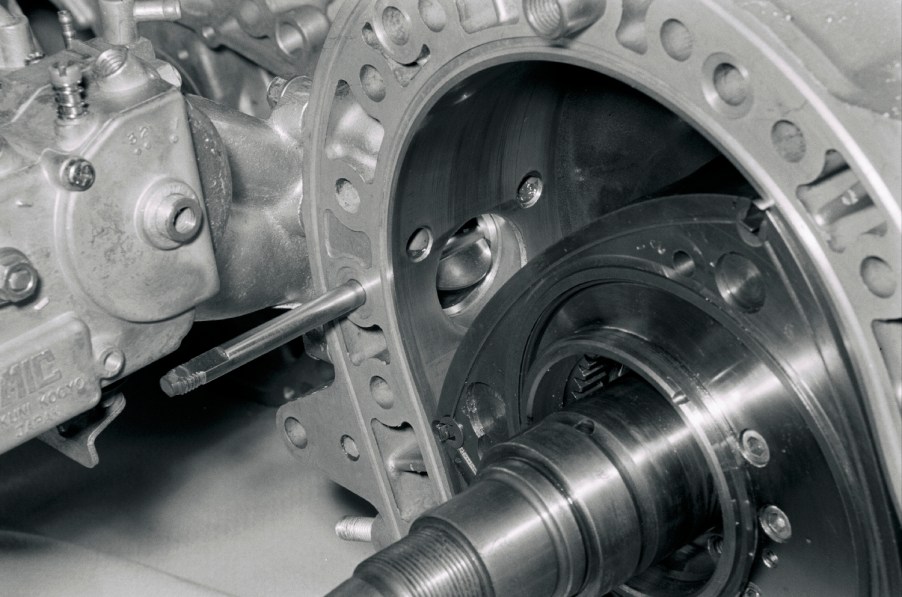
Never Forget That General Motors Almost Used a Rotary Engine
Enthusiasts generally associate the Wankel rotary engine with Mazda and its eminent RX-7. However, General Motors had it too and had it in production cars as early as 1974 – at least on paper. Unfortunately, the Wankel had a tumultuous tenure under General Motors, and it ultimately didn’t enjoy the same success as it had in the Mazda RX-7. Forever lost to the sands of time, GM’s Wankel-titled chapter ended abruptly in retirement and disinterest. Here’s what happened and why the Wankel didn’t find favor with GM executives.
The Wankel rotary was an attractive idea
For the same reasons it appealed to Mazda, General Motors took to the Wankel rotary engine well. It was lighter than an internal combustion engine and had fewer moving parts. Gung-ho for developing the engine in passenger cars, GM paid $50 million for licensing, and development went underway. The 1974 Chevrolet Vega got the spotlight for the project. Its 1974 model was to host the Wankel rotary engine.
Wankel’s rotary engine proved reliable

General Motors had the rotors wrapped in iron housing, which allowed the Wankel to run 500,000 miles without much wear. It proved more reliable than GM’s piston engines. GM’s main selling point for the rotary was its simplicity. It weighed 200 pounds less, had about half as many moving parts, was smaller in every way. It also developed more power than the 307 V8. Early GM iterations of the Wankel had it developing 150 horsepower from 3.3 liters. After durability tests, GM switched the Wankel’s iron housing for aluminum for its heat-dissipating ability.
Trouble was brewing in 1973

With the Vega-Wankel’s 1974 release in sight, GM felt it was time to try and beat the emissions tests for 1975. This was a dark time in American car history, as the EPA put a stranglehold on big powerplants, reducing them to pitiful oversized lawnmower engines. The Wankel would be a small displacement, big-horsepower solution. All it had to do was pass emissions.
GM’s design proved to lessen the Wankel’s fuel efficiency. While it did achieve lower emissions, it came at the cost of fuel economy. At this time in American automotive history, the inability to improve fuel economy was corporate suicide. While GM was able to lower emissions and improve fuel economy, the Wankel’s reliability went out the window. GM now faced the dreaded apex seal problem, among other issues, with the engine changing from hot to cold temperatures rapidly.
The Wankel rotary couldn’t catch a break
Preserving durability meant sacrificing fuel efficiency, which MotorTrend pointed out made the whole Wankel prospect much less attractive. GM postponed the Vega according to the New York Times, and Ed Cole, who had championed the project, duly retired. His successor wanted nothing to do with the Wankel, and the whole idea was scrapped. GM also fitted a 1970s Corvette with a mid-mounted Wankel, which unfortunately never came to fruition.
Perhaps it was actually fortunate that GM never made the Wankel rotary work in its road cars. Had it been successful, we may have been robbed of the Mazda RX-7 and instead gotten an econobox Vega competitor.


